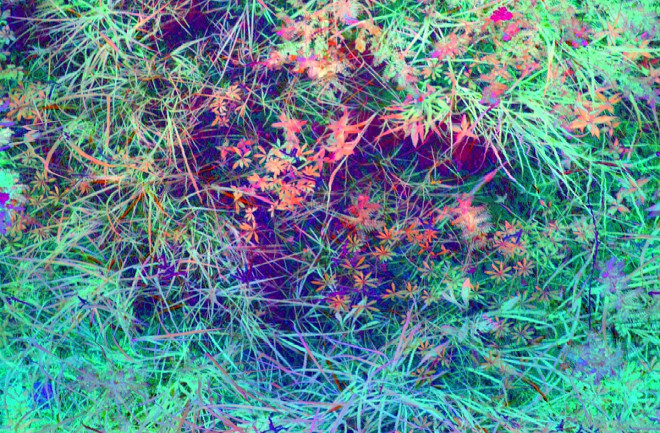You’re not trippin’. Scientists using an image spectrometer — essentially a specialized camera that captures light waves invisible to the naked eye — created this technicolor shot to understand plant biodiversity and function.
Experts at the University of Alberta mounted one of these spectrometers on a mobile robotic cart to capture the spectra of light reflected by plants in the Cedar Creek Ecosystem Science Reserve in Minnesota. The image below shows differences in plants’ functions, which, the team suggests in a recent Nature Ecology & Evolution paper, could be a way to illustrate and track biodiversity.
In this false-color image, red represents sun-induced fluorescence, when a plant releases extra solar energy it doesn’t need for photosynthesis; green indicates the light-absorbing pigment chlorophyll; and blue marks a plant that is under stress, which can affect its ability to perform photosynthesis.

